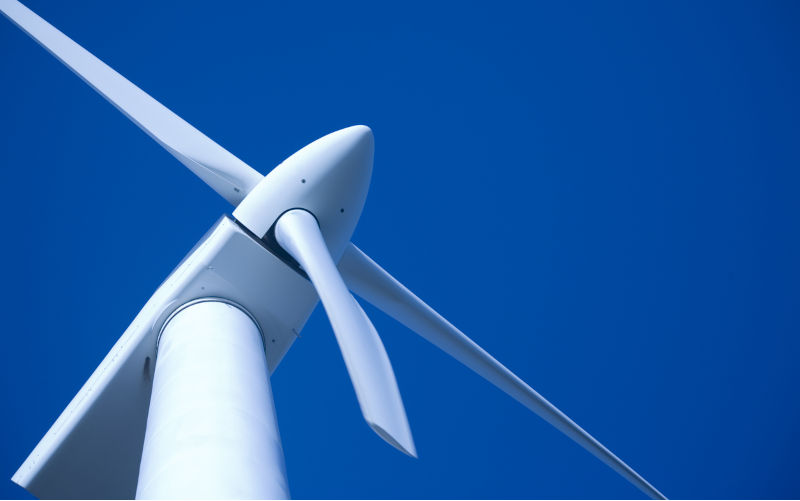Andrew Forrest makes big bet on self-lifting turbines in landmark 'real zero' deal with Envision
October 1, 2025
Iron ore billionaire Andrew Forrest appears to have gone all-in on a radical new “self-lifting” turbine technology that will underpin the development of his first major wind project and underpin his green energy ambitions.
Forrest on Friday revealed a series of landmark deals that included the full purchase of the Spanish-based Nabrawind (his company Fortescue Metals already held a minority stake) and the decision to roll out this technology with Chinese turbine maker Envision.
The deal is significant for a number of reasons.
First, is the entry of Envision as a potentially major force in the Australian wind energy market, which has traditionally been dominated by Vestas and Goldwind.
The deal with Fortescue, initially for 132 megawatts of what could be a 2.1 gigawatt (GW) project, is its first large contract in Australia, and many developers are looking to the company to add much-needed price competition in a market that has been rocked by rising costs, particularly on the civil construction side.
Secondly, the marriage of Nabrawind’s “self-lifting” technology with Envision’s EN182-7.8 MW turbines is a fascinating move. Nabrawind says its technology addresses civil construction costs, particularly in remote areas, because it offers faster deployment and smaller foundations.
See our previous story on this technology: The radical new self-lifting turbines Andrew Forrest wants to install at Australia’s biggest wind project.
The Nabrawind technology is designed to lift the turbine blades higher into the air, meaning it can access stronger wind conditions – and the combination of lower costs and higher yield could be make or break for projects of that scale.
It does this with a self-lifting technology — which eliminates the need for giant cranes — a crucial point in remote areas. And its use of a “tripod” base in turns means smaller concrete foundations, and a lot less concrete – again alleviating a potential logistical headache in remote, hot regions where concrete pours are already a challenge.
Thirdly, the deals announced on Friday underline the fact that Fortescue is serious about its goal of reaching real zero by 2030. Forrest’s green hydrogen dreams may have eluded him — at least for the moment — but his determination to rid his giant iron ore mines of fossil fuels is very much alive.
The 2.1 GW East Pilbara generation hub will be supported by the 600 MW or so Turner River solar hub (hence at the deal with Chinese solar PV supplier Longi) and battery storage (hence the deal with global battery giant BYD).
Meanwhile, Fortescue has also lined up a second supplier for the nearly 400 huge 240-tonne battery electric haul trucks that it will need to deploy at its iron ore mines to slash its diesel use.
Envision released a statement noting that its turbines — “known for their high efficiency and adaptability” — will be paired with 188-metre Nabralift steel towers, the tallest of their kind worldwide.
It says this technology is designed to maximise energy production in low-wind conditions and withstand extreme weather, including cyclones and typhoons.
“The project will be among Australia’s first large-scale deployments of this technology, setting a new benchmark for renewable infrastructure and unlocking greater generation capacity and efficiency to help achieve Real Zero,” it said.
In fact, it will be the first in Australia, and among the first anywhere in the world, with Nabrawind rolling out a few pilot and small scale installations in Europe and Africa.
Nabrawind says it has developed a “self-lifting” turbine design that is efficient because it means lower costs, easier logistics, and less emissions. It says they are quicker to build, require no heavy cranes, and use much less concrete.
Rather than a single tower, the “Nabralift” turbines, identified by Forrest in its wind project application, use a lattice style structure up to a certain height that can be supported by a three-column structure, which requires smaller footings and less concrete.
Renew Economy understands that the first “integrated” Envision turbine with Nabrawind technology is being built in China. The first stage of the East Pilbara project will require 17 such turbines, and the first turbines are expected to be erected in 2026.
“The challenge of climate change is global, but Australia’s energy transition can lead by example.” said Kane Xu, SVP and president of international product line of Envision Energy.
“Australia’s abundant wind and solar resources, combined with cross-border collaboration and advanced technology, can create resilient, low-cost energy systems capable of fully replacing fossil fuels in industrial operations.
“Our partnership with Fortescue is set to deliver substantial advancements in renewable energy infrastructure, demonstrating how innovation and engineering can reshape the future of energy in hard-to-abate sectors, and setting new benchmarks toward a Real Zero future.”
Fortescue chief executive Dino Otranto says the Pilbara has some of the best wind and solar resources in the world, and Fortescue is working on its second solar farm, taking its total of co-located solar facilities to three (the first at Chichester is owned by APA).
In total, Fortescue is looking at building between 2 GW and 3 GW of large-scale wind and solar, and an as yet unspecified amount of battery storage. The “real zero” target requires no burning of diesel, gas or oil for the company’s mining operations, including transport and mining equipment.
“We’re harnessing these to power our operations with renewables – cutting emissions while building an energy system that is reliable and efficient for the long term,” Otranto said in a statement.
“By combining Envision’s world-leading wind turbine technology with Nabrawind’s innovative tower design, we can deliver large-scale renewable energy projects that help us move away from fossil fuels.”
Republished from Renew Economy, 29 September 2025
The views expressed in this article may or may not reflect those of Pearls and Irritations.
